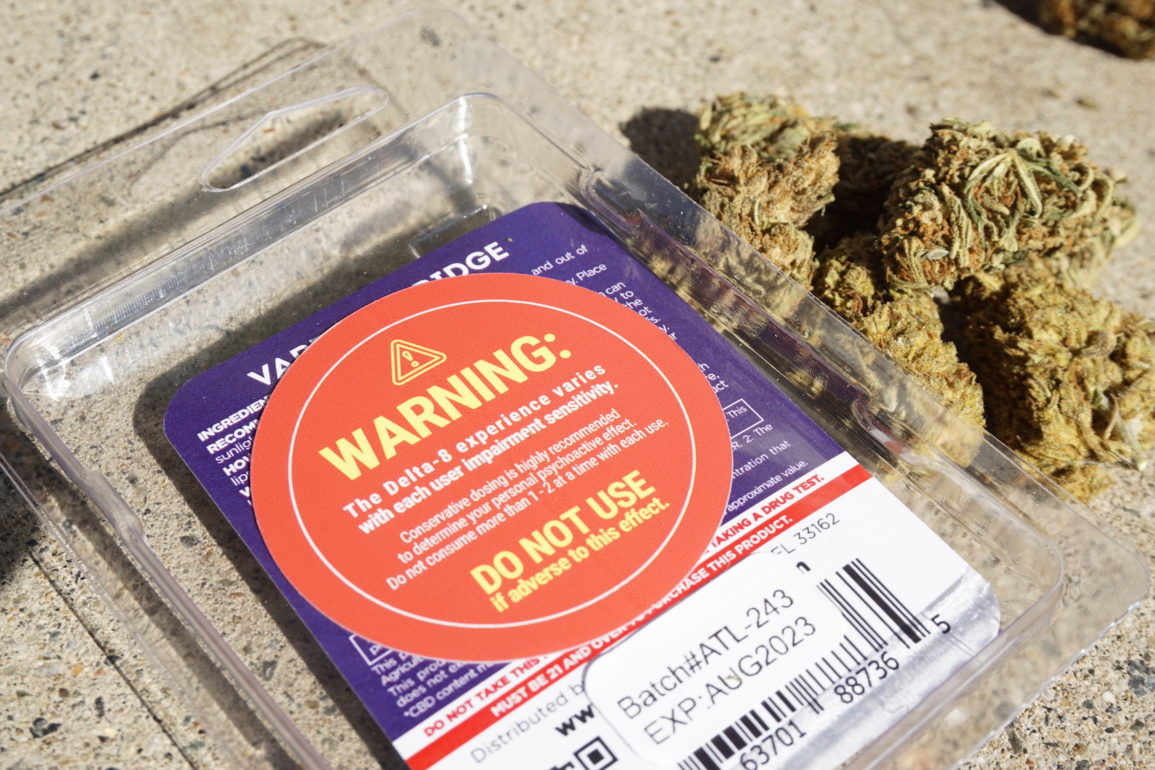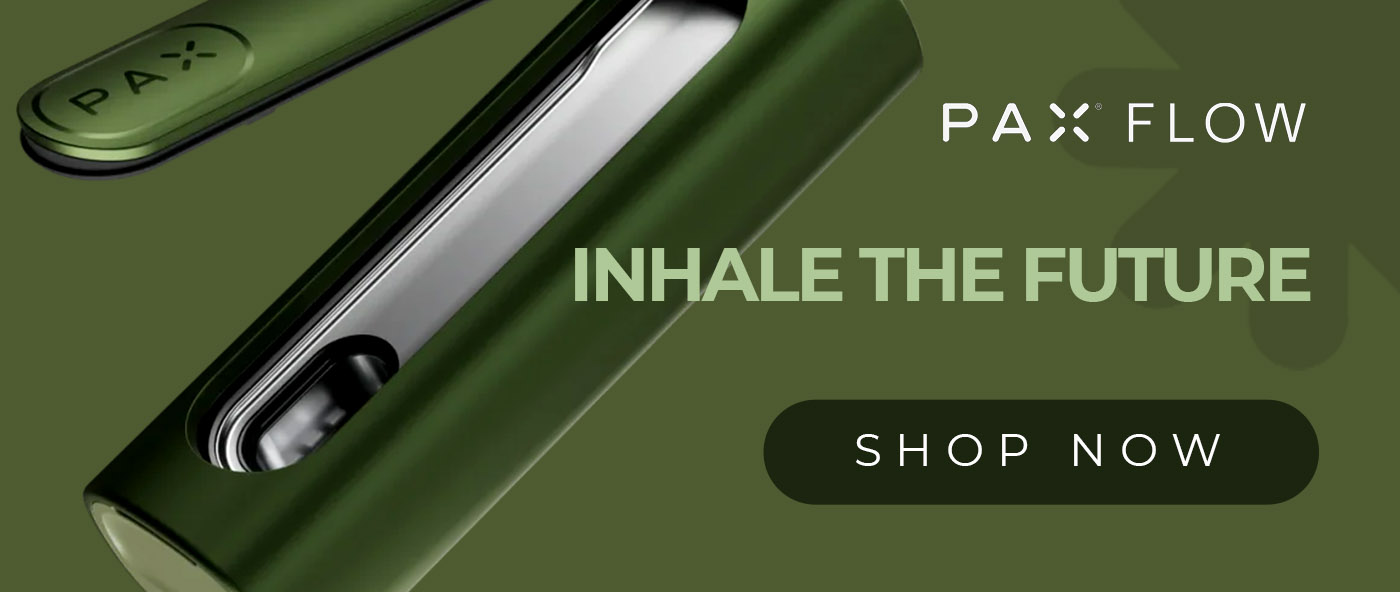Delta-8 THC is making big waves in the cannabis industry at the minute, but with warnings from the FDA and CDC, not to mention harrowing accounts from users, it’s clear there’s more going on with the novel cannabinoid than meets the eye. The companies are advertising it as a legal way to get high, touting medical benefits and generally making big promises about what they can deliver, but an investigation from the US Cannabis Council has found illegal levels of delta-9 THC in products for sale around the country. But it can’t really be as bad as it sounds, can it?
We wanted to investigate, so after collecting samples from online stores and brick-and-mortar smoke shops, we commissioned FESA Labs to perform independent testing on 51 delta-8 products. Our goal was to establish a few things in particular. Firstly, will you be actually getting delta-9 if you buy a delta-8 product? Secondly, will you be getting as much delta-8 as the companies claim? And finally, will you be getting any residues from the manufacturing process alongside your cannabinoids?
Unfortunately, the news is not good. Customers looking for a “weed light” experience could be getting something decidedly heavy, with delta-9 THC levels well beyond the legal limit and very little in the way of testing for impurities. While it’s not at the level of the 2019 lung disease outbreak, the potential for serious harm to public health is impossible to ignore, and in many ways, delta-8 is a ticking time bomb that could damage the reputation of the cannabis industry for years to come.
Table of Contents
Testing for Safety: Are Impurities a Problem?
Do Delta-8 THC Companies Verify Customers Ages?
Do Delta-8 THC Companies Test Their Products?
Do Delta-8 THC Companies Alter Their Lab Reports?
Do Delta-8 Companies Use Warning Labels?
Is This Similar to the Vitamin E Acetate Crisis in 2019?
The Risks of Unexpected Delta-9 in Delta-8 Products?
What Can Consumers Do to Protect Themselves?
Expanded Summary of Delta-8 Independent Test Results
How Should Delta-8 Be Regulated?
Executive Summary
CBD Oracle commissioned FESA Labs to analyze a total of 51 different delta-8 THC products for cannabinoid levels, with a random subset of 8 being additionally tested for impurities, including heavy metals, solvents, mycotoxins, pesticides and microbial contamination, as well as testing for vitamin E acetate. The products included flower, edibles, prerolls, tinctures, concentrates, vape cartridges and vape pens, and were mainly purchased online from various states. We also performed a thorough examination of the labeling and marketing of the products we obtained, and checked their age verification process. The results from FESA Labs show that the levels of delta-9 and delta-8 THC were not as advertised in the majority of products, very few performed substantial age verification checks, and that the majority of products are not tested for impurities. More specifically:
- Illegal Levels of Delta-9 THC: 76% of tested products contained delta-9 THC at greater than the 0.3% limit set by the 2018 Farm Bill, making them indisputably federally illegal. One product contained slightly more than 23% delta-9, putting it at a massive 7700% of the legal limit.
- Illegal Delta-9 Levels More Likely in Vapes and Concentrates: Vapes and concentrates generally contained higher levels of delta-9 THC than flower, tinctures or edibles.
- Illegal Delta-9 Levels More Likely in Brick-and-Mortar Stores: Products sold through gas stations and smoke shops had higher levels of delta-9 THC, while ones sold by more established companies tended to have lower levels.
- Many Companies Deliver Less Delta-8 Than Promised: Approximately 77% of products tested had less delta-8 THC than advertised, on average containing 15% less than the advertised amount.
- Impurities Are Not a Major Concern: We tested a total of 8 products for impurities, and all of them passed the test, with no detections for heavy metals, pesticides, solvents, mycotoxins, microbial impurities or vitamin E acetate.
- Age Verification is Rare: Only 14% of companies (6/44) required age verification for online purchases. One of these required a signature on delivery and the other five used an online verification platform whereby the user has to upload an image of a driver’s license. Most companies only had a pop-up asking users if they were 18/21.
- Tests Are Common, But Not for Impurities: 84% of companies have some kind of lab reports available for their products. However, 67% of products are not tested for impurities.
- Companies Fake Lab Tests: Other investigations and interviews with labs have revealed that some companies falsify lab results to build undeserved consumer trust. In our investigation, 2 out of 20 lab reports had been altered.
- Only Half Have Warning Labels: 55% of companies have warning labels on their products, with other containing nothing.
Overall, the lab investigation paints a picture of an industry with some reputable companies being dragged down by many who don’t deliver what is promised to consumers, often selling products that are indisputably illegal at the federal level and open consumers up to risks. Customers can check lab results, but with little correspondence between lab results shown to customers and the results of testing on the actual product, this doesn’t really offer much assurance. Regulation is needed to fix the industry, but consumer diligence or even avoidance is strongly recommended until then.
What We Discovered, and Why It’s Concerning
The investigation covered a lot of important ground, but the main results concern the levels of delta-9 THC in each product, the inaccuracy of the labeling, how easily minors can get access to products and whether companies test for impurities. We’ve collected the results under these headings to make it easier to navigate to what you’re looking for.
Illegal Limits of Delta-9 THC
The main finding from the investigation concerns the level of delta-9 THC in delta-8 products. Of the 51 products tested, 11 had delta-9 levels definitively below the 0.3% indicated by the 2018 Farm Bill, while another had 0.31%. Overall, around 76% of products tested were over the legal limit for delta-9 THC, with levels ranging from just over the limit – for example, 0.4% in the Watermelon Pot Rocks from Hemp Living – right through to a massive 23.17% in the Blueberry Muffin disposable vape pen from Dope. This is a massive 77.2 times higher than the legal limit.
This means that strictly anti-recreational THC States such as Florida, South Carolina or Oklahoma and Louisiana are getting THC products sold unknowingly. They are acting as if they enjoy the federal legality afforded to CBD products, while their contents show they are basically selling ordinary-enough cannabis products. However, even legal states have tons of requirements for delta-9 sellers that delta-8 sellers simply aren’t following, so even in “legal” states it’s unlikely to really pass the legal sniff-test.
The average amount of delta-9 THC in all products tested is 6.6%, which is 22 times higher than the federally legal limit. However, breaking down the results by type of product, where it was purchased and by how established the brand is gives more detail to the picture.
By Product Type: Which Has the Most Delta-9 THC?
Generally speaking, delta-8 THC vapes and concentrates contain much more delta-9 THC, with flower and edibles tending to have lower amounts. The averages for different types of products were as follows:
| Delta-8 Product Type | Delta-9 THC |
|---|---|
| Vape pens | 13.11% |
| Concentrates | 12.51% |
| Vape cartridges | 10.22% |
| Flower and prerolls | 0.87% |
| Tinctures | 0.84% |
| Edibles | 0.09% |
The difference between concentrates and vaping products and other delta-8 THC products is pretty striking, to the extent that you can be fairly confident a product is within the limits if it’s an edible, but almost certain it will be over the limit if it’s a vaping product or concentrate.
Does Delta-9 Concentration Vary Based on Where Products Are Sold?
The results show that delta-8 THC products that are available from gas stations or smoke shops have substantially higher delta-9 THC levels on average, at 9.25%. This is a problem on its own, but an important additional point is that many of these products also don’t offer certificates of analysis (COAs) or at least they’re hard to find and/or read. This should be seen as a warning sign for these products, but an issue remains in their availability to casual consumers who may not be aware of the issues or even the importance of looking at the COA.
Do Established Companies Control Delta-9 Levels Better?
We also compared credible, well-established companies offering delta-8 THC products to less established ones. Essentially, the comparison looked at companies who had existed years before delta-8 hit the scene with those who opened in the last two years and focus primarily on delta-8 products.
We found that the credible companies’ products contained significantly less delta-9. The average for these companies was 2.81%, compared to 8.23% for less credible companies. This shows the importance of doing your due diligence and checking out the company you’re about to make a purchase with before hitting the “Buy” button.
The Labeling Lies: What it Tells You vs. What it is
For consumers, the labeling represents a core element of the trust relationship between them and the company they’re paying for products. The labeling represents the main opportunity the company has to give the consumer a realistic indication of what they’re purchasing. The problem for many of the delta-8 companies based on our testing is that the customers probably shouldn’t trust what they’re putting on the labels.
Labeling and COA Issues for Delta-9 THC
For the vast majority of companies, they either explicitly claim or have a COA on-site showing that they are compliant with the limit of 0.3% for delta-9 THC suggested by the Farm Bill. However, as the previous results show, the vast majority of companies have mislabeled this. On average, the products tested were around 513 times higher than either their reported amounts or, if they reported 0% delta-9, a (fairly generous) limit of quantification of 0.01%. This isn’t counting the companies that didn’t even have a COA, but with them included, assuming a claim of 0% and using the same limit of quantification, the average would be over 569 times the claimed quantities. Based on the limits of quantification from the actual lab reports, you would have to add at least another zero onto these figures.
Of those reporting specific amounts (rather than just claiming 0%), the worst offender – Delta Alternatives – reported their product having 0.28% delta-9, but it was found to have 22.34% delta-9 based on testing. This is almost 80 times higher than their reported quantity.
In fact, only 10 companies out of 51 reported levels of delta-9 THC (taking a lack of reporting as indicating no delta-9) which were within 0.1% of the actual measured amount. This doesn’t include Space Walker, which oddly reports 0.9% THC but actually only delivered 0.64%. In short, only 19.6% of companies were remotely accurate when it comes to reporting vs. actual content for delta-9.
Mislabeling of Delta-8 Content
The results suggest there is another issue in terms of mislabeling of the amount of delta-8 THC in the products tested. Of the 44 products with a COA or otherwise stating a quantity of delta-8, the measured amounts were an average of 15% lower than the advertised amounts. So if a product advertised 80% delta-8, it would contain 68%, or if it claimed to be completely pure it would contain 85% delta-8. Of these 44, just 10 (22.7%) actually gave customers the amount of delta-8 advertised or higher. One product – the Blue Dream wax concentrate from Binoid – claimed 77.8% delta-8 THC, but only contained 25.6%, less than a third of the advertised amount.
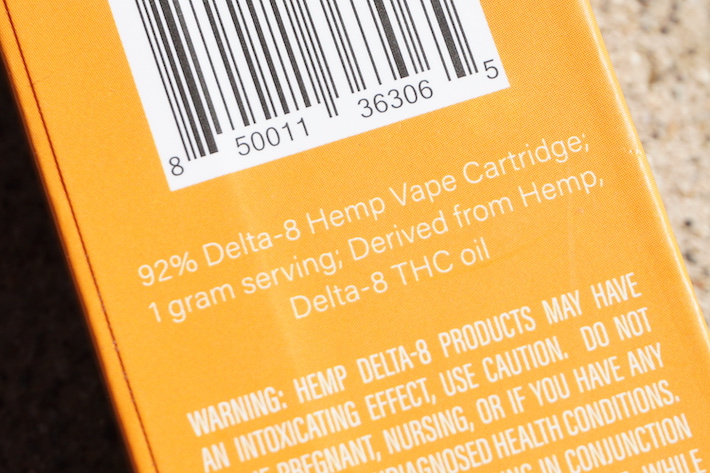
Mislabeling of CBD Content
Most of the delta-8 products tested (77%) contained no CBD, and the vast majority of these didn’t claim to contain CBD either. However, in total, 21% of the 43 products with a COA delivered products that were inaccurate (with the amounts delivered being out by 1 percentage point, e.g. a 5% CBD product containing less than 4% or more than 6% when measured), generally containing more CBD than advertised. Blue Dream was again the worst offender here, reporting 0% CBD but containing 64.51%.
Testing for Safety: Are Impurities a Problem?
While the testing so far has painted a bleak picture of business practices when it comes to the cannabinoid content of the delta-8 market, there is a whole other class of potential issues in the form of impurities. When you buy a delta-8 THC product, are you also getting pesticides, heavy metals and other impurities in the mix? We tested 16% of the products sampled for impurities to find out.
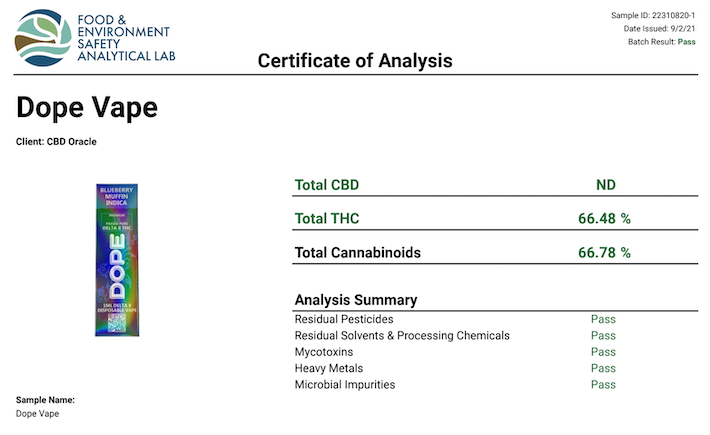
Overall, despite tests for pesticides, heavy metals, residual solvents, mycotoxins and microbial impurities, none of the tested products revealed any impurities. We also tested 30% of the vape products for vitamin E acetate (the cause of the vaping crisis of 2019), and found that none of them contained detectable amounts. However, of the 51 companies included in the analysis, just 17 (33%) conducted their own tests for impurities based on their lab reports.
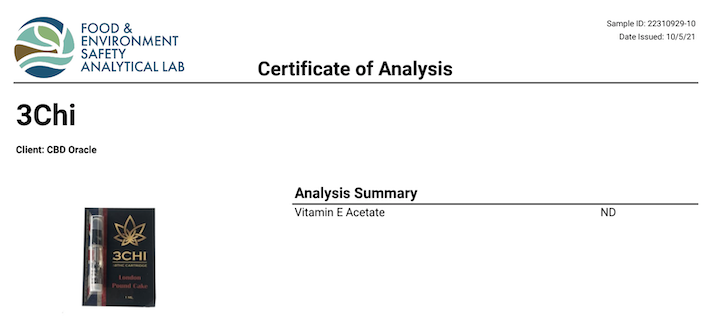
Do Delta-8 THC Companies Verify Customers Ages?
One major issue with online sales in particular is the challenge in checking that the customer is old enough to make the purchase. It is possible to perform online age verification checks before letting the customer place the order, but does it really happen with companies selling delta-8 THC?
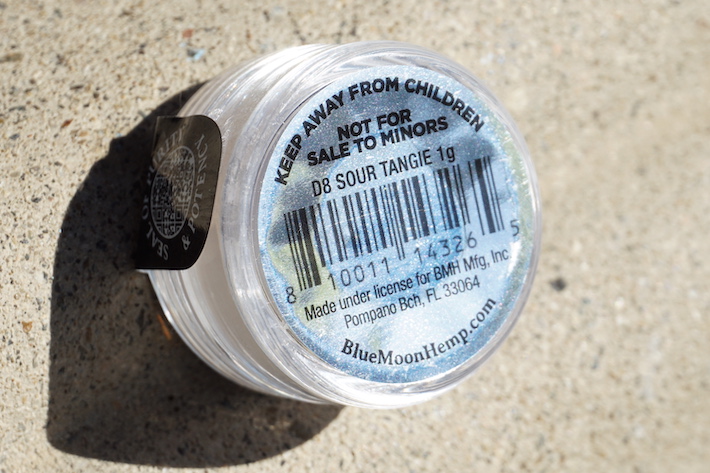
Out of the 44 companies whose products were purchased, only six (14%) had some form of age verification system in place. Five of them used an age verification form, which is in compliance with the FDA age requirements and state laws, where the customer has to upload a photo of a government ID, and the other required a signature on delivery of the package. All of the others only had a pop-up asking the user to confirm they’re over 18 or 21, with no other controls whatsoever.
This problem is compounded by branding decisions made by the companies, with some delta-8 products looking like a pack of Cheetos, for example, and others looking like cereal treats. With stringent controls on the age of customers, this isn’t as big an issue, but the combination could easily result in many minors getting access to delta-8 products.
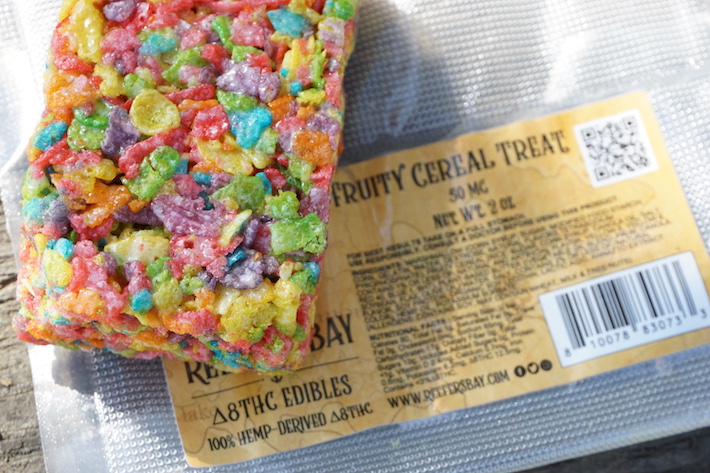
Some samples were also purchased from retail stores (i.e. smoke shops), and also required no proof of age.
Do Delta-8 THC Companies Test Their Products?
The type of testing we’ve conducted into the delta-8 THC products out there is exactly what the companies should be doing themselves on each batch. With the wide range of delta-8 and delta-9 levels seen in these tests, and the potential risks posed by contaminants (such as with the vitamin E acetate issue in 2019), this is one of the most important things for any responsible company to do.
Out of the 51 companies included in the lab analysis, 43 companies (84%) provided their own lab results on their websites. However, 34 out of 51 products (67%) are only tested for potency, leaving the products untested when it comes to things like heavy metals, pesticides, solvents and mycotoxins. While our analysis didn’t show any issues with these, this is a potential source of concern, especially with new companies entering the market all the time.
Do Delta-8 THC Companies Alter Their Lab Reports?
There is another, potentially bigger issue too. Some companies fake or manipulate their COA results, as Molly Longman details in a Refinery29 article, in which Hempire Direct is found to have shown (at least) two fake COAs on their website, with a lab director from Kaycha Labs Colorado explaining:
“They took our COA and edited it, thereby falsifying it. The company name is different on the real COA that I have. All four of the sample names are different. And we actually came back with small numerical values for mercury and lead and this says ‘not detected.’”
CBD Oracle’s interviews with labs have also confirmed similar manipulations to their own results. We checked 20 companies’ versions of the COA with the records at 8 labs, and found that 2 of the COAs were inaccurate. Boston Hempire’s Jack Herer had an altered report, and the Hemp Doctor’s GS Cookies was unable to be verified due to a missing QR code and differences from the lab’s record. Both of these are vape cartridges and actually contained 11.4 and 14.7% delta-9 THC, respectively.
In the interviews, representatives from the labs knew that manipulation was an issue. For example, Eric Wendt, Chief Science Officer at Green Leaf Lab commented:
“I’ve had a few customers call me to verify lab reports and found out that the company has changed the results on their site so there’s some manipulation of COAs unfortunately, and it’s frustrating to see.”
And a senior chemist at PharmLabs said:
“It’s the hemp black market. Many companies are also falsifying COAs. Few labs boost delta-8 numbers and hide D9 levels. Government needs to get in and regulate it – it’s unfair to people.”
This all makes it extremely difficult for consumers to make informed decisions when shopping for delta-8 products, because even the ones who do their due diligence and look for lab reports can still end up being misled. Our testing suggests that while this isn’t exceptionally common, 10% of the COAs we checked had been altered, so it is a substantial risk for consumers.
Do Delta-8 Companies Use Warning Labels?
Based on the 51 companies included in the lab analysis, around half (23 companies/45%) don’t make use of warning labels on their products. The ones who do include messages such as:
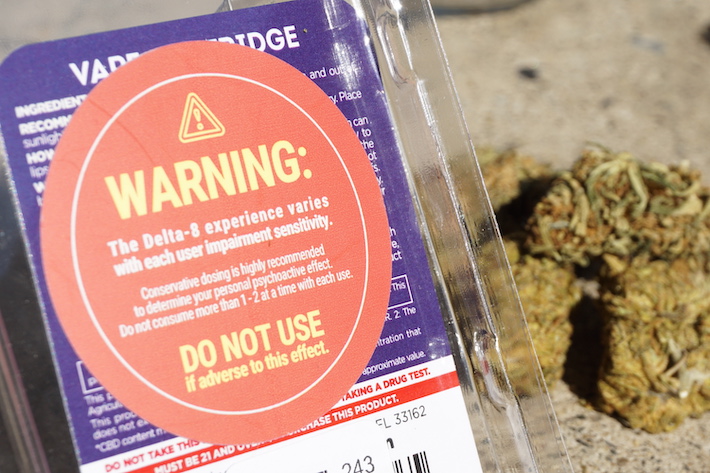
- High THC warning
- Keep out of reach of children and animals
- Not evaluated by FDA
- Use while pregnant or breast feeding may be harmful
- Don’t drive or operate machinery
- Consult your physician before use
- May affect blood pressure, heart rate, intraocular pressure
- Don’t use if you need to pass a drug test
- Intended only for adults 18+
- Use extreme caution
- May be intoxicating
How Big is the Delta-8 THC Market?
Based on our analysis, there are currently around 160 companies selling delta-8 THC products online, with more than 4,200 unique products for sale, including edibles, concentrates, vapes, flower, prerolls, tinctures, topicals and beverages.
Is This Similar to the Vitamin E Acetate Crisis in 2019?
The biggest issue that has become obvious through this and other analyses of delta-8 THC products are the high levels of delta-9 which are undeclared and yet found in many of the products on the market. Against the backdrop of legalization, this might not seem like a huge issue, but the problem isn’t with delta-9, it’s with the unexpected delta-9 THC in the products.
Delta-8 has appeal for many users because it’s described as “cannabis light,” offering a milder experience with the same basic qualities. For people who have problems with anxiety or paranoia after using ordinary cannabis, delta-8 allows them to get the benefits THC can offer with a lower risk of downsides. However, if someone like this was to buy 80% of the products we tested, they would still be exposed to levels of delta-9 above the limit used for CBD products (and possibly delta-8). Although the risk isn’t as severe as if there were high levels of impurities, for example, it is still a serious problem for consumers that should be taken more seriously by the industry.
The natural comparison for this is the “vaping” illness outbreak in 2019 which is highly likely to have been caused by illicit cannabis vape cartridges which had been cut with vitamin E acetate. This was done to thicken the mixes and thereby give the impression of purity, but it led to severe lung problems and deaths in people who vaped it.
The presence of “normal THC” in your intended “alt THC” product isn’t really at this level (since your intention was to get something very similar anyway), but for the reasons discussed above, it is still a serious problem. Customers shouldn’t be misled about what they’re purchasing under any circumstances, but much more so when they’re putting a psychoactive substance into their bodies. At present, the results suggest that companies are “padding out” the smaller-than-advertised amounts of delta-8 with delta-9, breaking both consumer trust and the law.
A better comparison for this scandal is the supposedly nicotine-free flavorings for mixing vaping e-liquids which were found to actually contain nicotine. This would mean that someone who wanted to avoid nicotine for whatever reason, but still vape, would have gotten nicotine (and potentially become addicted) against their will. As in this case, this also happened relatively early in the history of e-cigarettes, when the industry had much less oversight and there were undoubtedly many companies who cared more about cashing in than their customers. However, the more recent report from Australia is just as concerning.
But that isn’t to say there is no potential for a more “vitamin E acetate” like problem to occur in the future. At present, with almost no regulation over the industry, there is a definite risk of what chemist and hemp safety expert Dr. Matthew Curran describes to Refinery29 as “kitchen chemistry.” In essence, with no oversight on the industry and a relatively simple process for converting CBD into delta-8, there is a real risk of essentially anybody deciding to produce a delta-8 product from out of their homes.
This, as we have seen, can have very serious consequences.
The Risks of Unexpected Delta-9 in Delta-8 Products
With the vast majority of delta-8 products in this investigation containing over 0.3% delta-9 THC, and many of these actually having substantial amounts, it’s worth thinking about the consequences this could have. If you’ve chosen delta-8 for a “weed light” experience, chances are you find delta-9 a little too intense for one reason or another, often the paranoia and anxiety it can induce.
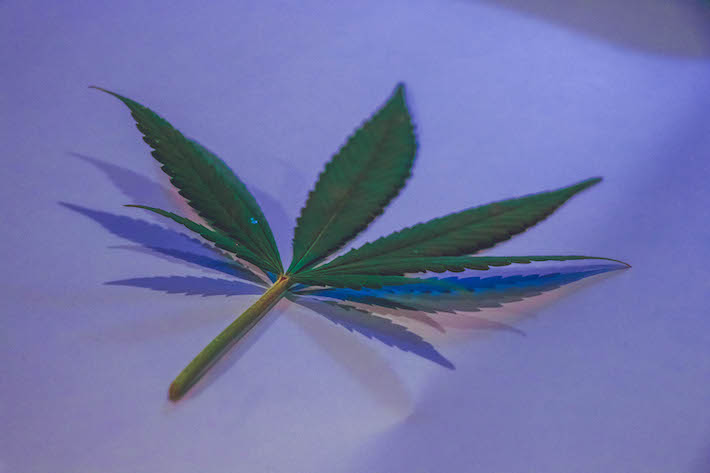
The Risk of Delta-8 Products with High Delta-9 For Young People
Young people are most likely to be affected by the negative psychological effects of cannabis, especially those already prone to mental health issues for one reason or another. This is true for psychosis and schizophrenia, which we’ll speak about in more detail in a moment, but as pointed out by doctors Robert Gabrys and Amy Porath in a report for the Canadian Centre on Substance Use and Addiction, cannabis use before 16 or 17 is “one of the strongest predictors of cognitive impairment.”
They point out, for example, that while cannabis use doesn’t cause severe impairment of cognitive functioning for most people (usually completely disappearing after a few weeks of abstinence), if you start using cannabis as a teen or a young adult, it can lead to more serious and long-term issues. They also point out that both cognitive inhibition (your ability to stop distracting or irrelevant information from entering your thoughts) and response inhibition (the ability to stop behaviors no longer appropriate for the situation) are affected by heavy cannabis use in both teen years and as an adult. This is also worse if you start off younger.
It’s worth noting that both of these effects could run in the other direction. For example, people with inhibition issues might be more likely to smoke cannabis in the first place, rather than the cannabis use itself making the situation worse. However, there is undeniably an association for both based on the best evidence available.
The Risk of Delta-8 Products with High Delta-9 For Anxiety and Depression
Research suggests that about one in five people will have an increase in paranoia as a result of the delta-9 THC after consuming cannabis. This study also found an increase in anxiety, low mood and negative thoughts about the self for those taking delta-9 relative to those taking a placebo. For people who have these side effects from weed, ending up with delta-9 in a delta-8 product could be a serious problem.
The Risk of Delta-8 Products with High Delta-9 For Psychosis and Schizophrenia
There is also plenty of evidence that delta-9 THC increases the risk of psychosis or at least psychotic symptoms. For example, one study of almost 46,000 men conscripted into the Swedish army found that those who’d used cannabis more than fifty times were approximately six times more likely to develop schizophrenia over the next 15 years than those who’d never used it. Other studies and meta-analyses of these studies have also supported this conclusion, with the best estimate being around a four-fold increase in risk for heavy users vs. non-users.
Is Delta-8 Really Different to Delta-9 for These Risks?
However, it is worth noting that it’s not clear at this point whether delta-8 will really lead to less anxiety, paranoia and psychiatric illness than delta-9. Since it’s less potent, it stands to reason that for an equivalent dose the side effects would be reduced. However, if you took more delta-8, you would likely run into the same issues. Similarly, just like pot paranoia isn’t something that happens every time you light up, you may run into problems with delta-8 even in regular doses eventually. The same argument can be made for other potential impacts of delta-8 vs. delta-9: there isn’t much research at present and they’re similar enough that it isn’t a magic bullet to stop unpleasant effects.
So while the mental health impacts are a compelling reason that companies having unexpected delta-9 in their products could be a serious problem, it’s a complicated issue and people with these issues should still tread carefully with delta-8.
Why Are the COAs so Inaccurate?
The high levels of delta-9 in many of the products and the inaccurate levels of delta-8 raise many important questions, most of all: how can the lab reports be so wrong if most of them have been confirmed not to have been altered? When we spoke to representatives from the labs, many of them commented on this exact issue and what they said really helps put what we’ve learned into context.
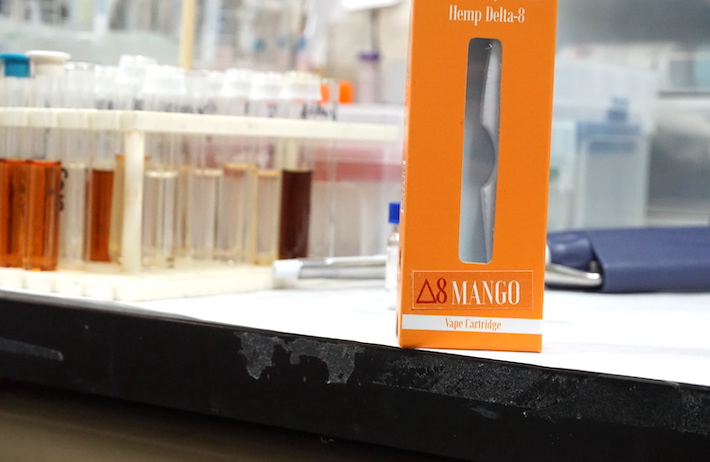
Firstly, there are challenges when it comes to producing delta-8 that makes it difficult to ensure purity. Eric Wendt from Green Leaf Lab commented:
“Stay away from delta-8 products if you’re worried about consuming delta-9. Most delta-8 products, especially the concentrated forms, will likely have higher amounts of delta-9 in them because of the way delta-8 is extracted. […] I feel better about the CBD market (and CBG, CBN). Those cannabinoids are easier to extract so there’s less risk with doing it wrong. Delta-8 extraction is more tricky so there’s a higher risk of having delta-9 in the end product.”
Another potential reason was explained by Sara Bianacalana, the Chief Scientist from Marin Analytics:
“Some labs can spike delta-9 through testing methods they use (i.e. using too much heat or letting the solvent sit for too long). Depends on the solvent, method, gradients you’re using. Sometimes you can be reading the isomers under the peaks and mistake it for delta-9. Also depends on how you are separating the molecules. Every lab uses a different method so the data is not going to be consistent.”
Jayneil Kamdar PhD from InifiteCAL Labs also stressed this explanation:
“The only chemical difference between the molecular structures of delta-8 and delta-9 THC is the position of the carbon-carbon double-bond. Such a small difference in their structures can lead to similar retention times and UV profiles, making it a challenge to distinguish the two compounds. Achieving adequate analytical separation requires a well-developed analytical method in the hands of an experienced analytical chemist. In addition, there are unfortunately a concerning number of labs that may intentionally ignore the delta-9 THC signal and choose to report only delta-8 THC.”
In short, the fact that delta-8 is an isomer of delta-9 (i.e. it has the same chemical formula but differs slightly in structure) makes it more of a challenge to get accurate results from the lab. Different testing methods and solvents can have a big effect on the readings, and errors during the process and while interpreting the results can lead to issues too.
Finally, delta-8 is not a stable isomer, and so the levels of both it and delta-9 can change over time. The senior chemist at PharmLabs explained:
“D8 is unstable and hostile. There’s an unknown isomer that converts it to D9 and causes it to peak when you’re testing it. It’s not 100% [stable], so it’ll convert back to delta-9 sometimes. It’s volatile. The BCC [Bureau of Cannabis Control] is looking into creating new laws because of these uncertain levels. It’s very very uncertain. I get a lot of calls from people who’ve seen high delta-9 in their product. It could be the way it’s stored – some people leave cannabis in jars and let it sit – that can boost the THC levels. Some people think that D8 converts back to D9 through aging. Some D8 products test 0% for D9 but weeks later they test high for D9. We’re trying to work with other labs to do an experiment to see if aging matters.”
It’s clear that with delta-8 still being relatively new on the scene, there are a lot of things we simply don’t know about storage and how aging affects it, and many of the processes could produce delta-9.
Overall, while the inconsistencies revealed by this report are a cause for concern, in many cases there are plausible explanations for the problems that don’t involve companies intentionally misleading customers. However, even in cases where lab reports weren’t altered, at very best the results show that companies don’t take sufficient care over the production process to ensure customers get a pure product.
What Needs to be Done?
The core problem at the center of the delta-8 THC industry is the complete lack of regulation. With the industry existing in a legal loophole and riding a wave of interest in this and similar alternative cannabinoids, the market is being flooded with amateur producers trying to make a quick buck with little concern for consumers. The faking of COAs is a perfect example of this attitude: they know consumers want safe products that deliver what is promised on the packaging, but they don’t want to go through the minimal amount of effort required to demonstrate it.
Solving the problems with the industry for good will take some time, but with more and more states putting stricter regulations in place for delta-8 THC products, the process is already underway. Especially in states where delta-9 is legal (and so the framework is in place), governments should move to bring delta-8 in line with these same regulations, as has been done in Michigan, for example. Those in the cannabis industry should join groups like the US Cannabis Council in calling for this to happen.
What Can Consumers Do to Protect Themselves?
Although many more actions need to be taken at larger scales, what can the individual consumer do to make sure the product they purchase is safe and offers what is advertised?
The best advice is unfortunately the most difficult to quantify: you should try to buy from credible brands. As our results showed, you’re much more likely to run into issues if you’re buying from an unknown operator, with more established names in the cannabis industry tending to be more reliable. One way to check this is to check cannabis consumer research websites such as this one for reviews and feedback, as well as looking out for seals of approval from organizations such as GMP, USDA, the US Hemp Authority and the Better Business Bureau.
This advice was echoed by Jayneil Kamdar, PhD from InfiniteCAL Labs, who commented:
“InfiniteCAL’s number one piece of advice for consumers concerned about buying safe, reliable products is that they should always look to purchase from a state-licensed dispensary. Products available in dispensaries need to meet specific testing standards for pesticides, heavy metals, microbials, mycotoxins, residual solvents, water activity and foreign material. Without doing this testing on a batch by batch basis, there’s no way to verify that the product that was tested is the same that’s available for purchase.”
Another important piece of advice, despite the issues shown by our analysis, is to ensure the company you buy from offers COAs for their products. However, seeing that there is a COA is far from enough. Firstly, you should open the COA and check what it actually says, including whether they are one of the majority who only test for potency rather than impurities. Ideally the company will test for both.
A final step, unfortunately necessary because of the documented cases of companies manipulating results, is to call or email the lab that issued the certificate directly and verify that it is genuine. In some cases, the COAs have a QR code which you can scan with your phone which takes you to the copy of the COA stored on the lab’s website. This allows you to check without having to contact the lab personally, although not all labs offer the service (and in one case of the COAs we checked, the company apparently removed the QR code).
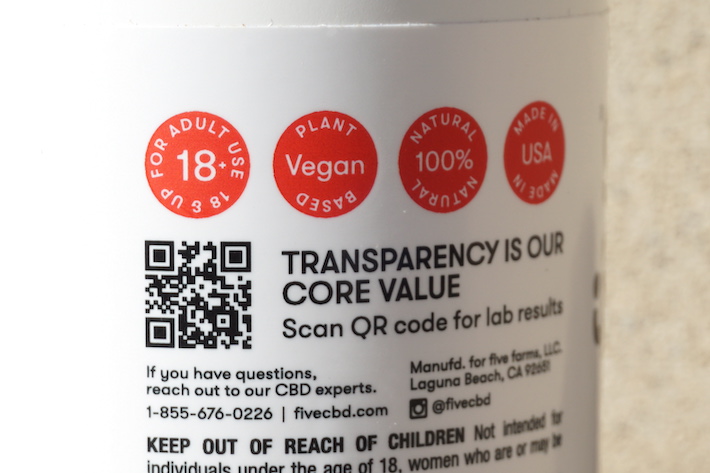
Jayneil Kamdar agreed here too, stressing that:
“The best a consumer can do is ask for a copy of the Certificate of Analysis (COA) prior to buying a product and work to find a brand that gets consistent results.”
This may seem like a lot of effort to go to prior to making a purchase, but it’s better to take your time identifying a reliable company at first, and then stick with them or others you’ve vetted for future purchases.
Expanded Summary of Delta-8 Independent Test Results from FESA Labs
After purchasing the samples from various stores and noting their age verification policies, the presence or absence of COAs, whether they use warning labels and recording the number of products they carry, the majority of the analysis was performed by FESA Labs, an independent testing facility in Santa Ana, CA.
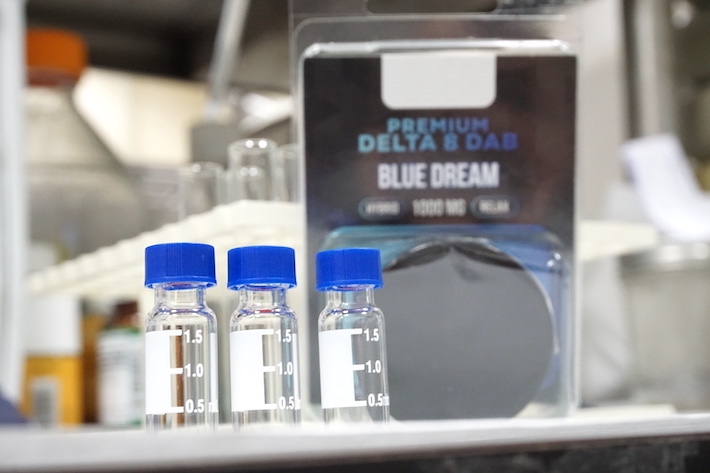
Methodology
CBD Oracle purchased 51 different delta-8 THC products from 44 different brands between August and September 2021. Most of the products were purchased online, from companies in CA, CO, FL, IN, MA, MN, NC, NV, NY, OR and PA, but a few come from smoke shops in CA.
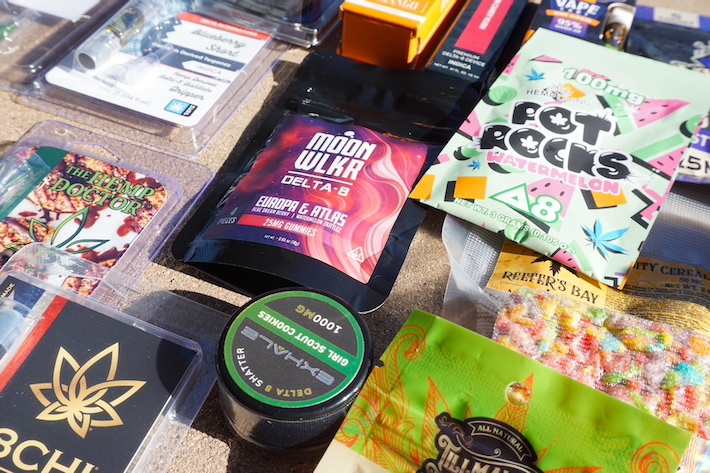
All of the products purchased were submitted for cannabinoid potency analysis. This was performed using high-performance liquid chromatography (HPLC), in which a sample of the product – flowers, concentrates, topicals, edibles, tinctures, extracts or liquids – is dissolved in a solvent and then analyzed using the HPLC machine. This test allows for identification and quantification of cannabidiol (CBD), cannabidiolic acid (CBDA), delta-8 THC, delta-9 THC, tetrahydrocannabinolic acid (THCA), cannabinol (CBN), cannabichromene (CBC), cannabidivarin (CBDV), cannabidiolquinone (CBDQ) and cannabigerol (CBG).
We also randomly selected 8 products to undergo further testing for impurities, including screening for heavy metals (arsenic, mercury, lead and cadmium), mycotoxins (aflatoxins B1, B2, G1 and G2, as well as ochratoxin), to go through liquid chromatography-mass spectrometry (LC-MS/MS) and gas chromatography-mass spectrometry (GC-MS/MS) pesticide analysis for the full list of illegal and controlled pesticides set by the Bureau of Cannabis Control, headspace gas chromatography with flame ionization detection/mass spectrometry (HS-GC-FID/MS) for residual solvents and quantitative polymerase chain reaction (qPCR) tests for microbial pathogens. 30% of samples were also tested for vitamin E acetate.
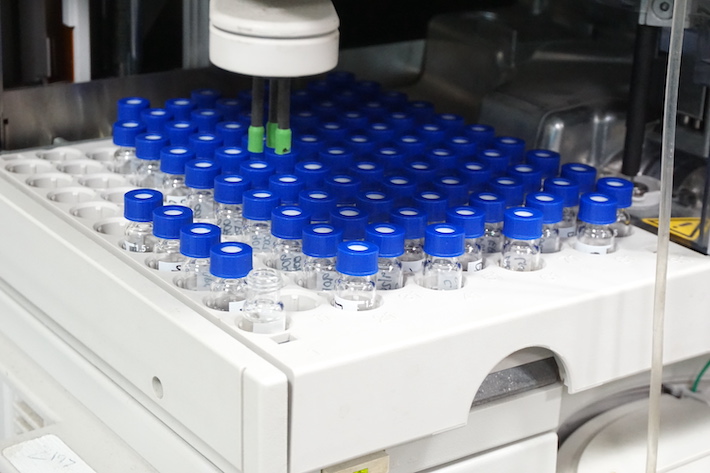
FESA Labs is an ISO 17025 accredited lab, which certifies that the tests they perform are consistent, reliable and traceable. Full information regarding limits of quantification can be seen on the full reports, however, they conform to all industry standards. Results for cannabinoids are reported as mass by percentage, mass per g or mass per unit, and for most impurities results are given in parts per million.
Results
The full selection of 51 lab results is available here and has been collected into a spreadsheet (available upon request). Since none of the 8 products fully tested were found to contain impurities, the information in the cannabinoid analysis pages contain the relevant data. For example, the Infused Preroll from Chief Stix was found to have 2.49% CBD, 1.15% delta-9 THC and 4.08% delta-8 THC.
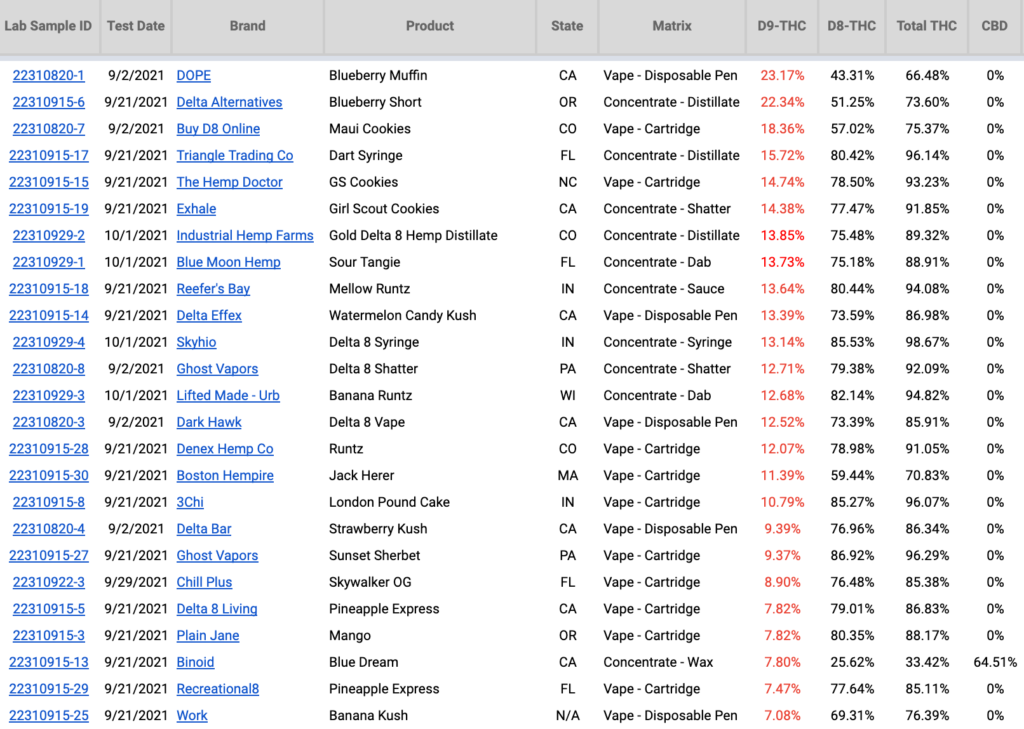
The Legality of Delta-8 THC
The whole concept behind delta-8 THC is that it doesn’t fall under the rules intended for delta-9 THC and therefore can be considered legal at the federal level, but is that really the case? Unfortunately for the companies offering these products, the reality doesn’t appear to be quite as simple as they might hope.
Is Delta-8 Technically Legal?
The issues surrounding the legality of delta-8 THC are more complicated than companies would like to imply, and at present it could essentially go in either direction. The argument for delta-8 being legal (explained well in two blog posts by lawyer Rod Kight) is that under the 2018 Farm Bill, hemp is made legal provided the delta-9 THC content of the plant is below 0.3%. The definition of “hemp” it uses is particularly interesting, though:
“All derivatives, extracts, cannabinoids, isomers, acids, salts, and salts of isomers, whether growing or not, with a delta-9 tetrahydrocannabinol concentration of not more than 0.3 percent.”
The italics were added for emphasis, because all cannabinoids in the plant are also classed as hemp, provided the delta-9 THC content is low enough. This would be the end of the story if delta-8 was taken directly from hemp plants, but most companies instead process it from hemp-derived CBD. However, CBD is a cannabinoid found in legal hemp plants, and as such it is also considered hemp. Rod Kight’s reasoning is that delta-8 is still therefore derived from hemp, and as such, it is legal provided the finished product contains less than 0.3% delta-9 THC.
There are a couple of potential counter-arguments to this position. The first comes under the Federal Analogue Act, which states that any chemical which is “substantially similar” to an already-identified controlled substance will be treated as if it were a Schedule I substance, particularly if the effect on the central nervous system is similar to or greater than the controlled substance in question. In this case, the argument would be that delta-8 is substantially similar to delta-9, which is a controlled substance and therefore delta-8 is a controlled substance as well.
The second argument is based on a DEA interim final rule on the topic of synthetic THC. This basically states that for synthetically derived tetrahydrocannabinols, the quantity of delta-9 THC is irrelevant and the substances will remain Schedule I. The rule does state that for tetrahydrocannabinols that are naturally-occurring components of the cannabis plant, they would be legal providing the delta-9 is under the 0.3% limit stated by the Farm Bill. The rule is not yet finalized, though, and the obvious issues regarding interpretation (is delta-8 “synthetic” when derived from CBD?) will likely have to be explicitly clarified or fought in the courts.
We spoke to Rod Kight about this issue and he was pretty clear in his response:
“It is clear for the reasons set forth in the legal position statement that my firm wrote for the Hemp Industries Association (HIA) that D8 is not a controlled substance at the federal level, or at the state level in most states. I am concerned with the growing number of state departments of agriculture that have weighed in on this issue, despite the fact that they do not regulate controlled substances and do not have knowledge or experience with controlled substances. These opinions, most of which are flawed interpretations of their state’s laws, cause confusion and drive D8 products underground and into the grey/black market where they cannot be regulated at all.”
Why Are Companies Claiming They Are Federally Compliant?
Companies claim they’re federally compliant basically through Rod Kight’s argument stated in the previous section: the CBD is “hemp” under the definition provided by the Farm Bill, and any derivative thereof is still legal provided it’s under 0.3% delta-9 THC. They would likely contend that the Analogue Act argument is irrelevant because the effect of delta-8 is substantially less than the effect of delta-9, and that delta-8, since it’s derived from hemp, is already addressed by the Farm Bill.
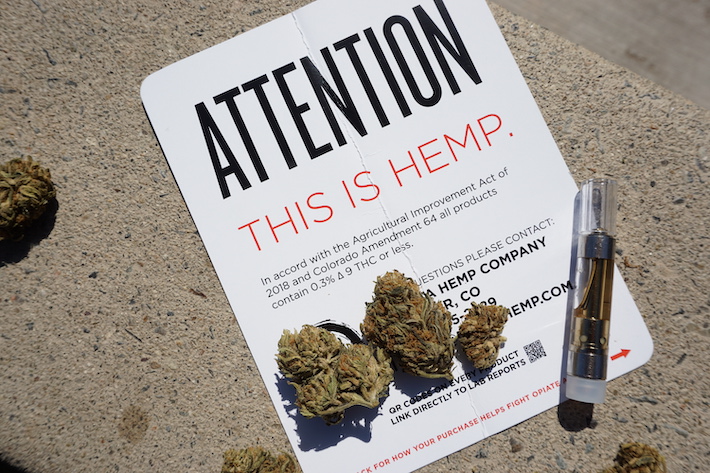
The point about synthetic THC is a little more complicated, because it comes down to the precise definition of “synthetic.” Delta-8 is synthesized, yes, but it is also a natural constituent of the cannabis plant. Does it matter that it can be produced through reactions with more abundant natural components as well? And moreover, the rule was written with “spice” in mind, clearly synthetic cannabinoids which have a stronger effect on the body than THC. It seems genuinely something of a stretch to call delta-8 synthetic and therefore meeting this definition, but this is a challenging issue and it will likely need to be addressed in the courts.
What Are the Different Approaches Taken by Some States?
Most states are with the federal government on delta-8 THC, basically leaving it in a (temporary) state of legal limbo, where it is permitted (if not explicitly “legal”) for now, but this will likely be clarified in future. However, some states have taken steps to regulate, restrict or ban delta-8. These states are:
- Alaska
- Arizona
- Arkansas
- Colorado
- Delaware
- Kentucky
- Idaho
- Iowa
- Mississippi
- Montana
- New York
- Rhode Island
- Utah
- Vermont
- Washington
- Michigan (comes into effect October 2021)
- North Dakota
- Connecticut
The legal status is also currently being reviewed in Alabama, Illinois, Oklahoma and Oregon. A recent legal battle in Texas led to the bill set to ban it being rejected by the legislature.
Although many states opt for an outright ban, because it’s very similar to delta-9 THC and that’s a controlled substance, there are others that take a middle-ground and go for some form of restriction without an outright ban. For instance, New York hasn’t banned delta-8 outright, but has outlawed the process of converting CBD to delta-8 chemically. In Michigan, they are looking at regulating delta-8 in a similar way to delta-9, which may raise hurdles for smaller businesses but doesn’t constitute a straight-up ban.
How Should Delta-8 Be Regulated?
Although most people agree that regulating delta-8 products in some way is necessary, the specifics of how they should be regulated is a much more complicated issue, and not everyone agrees on an approach.
The simplest way to categorize the different approaches is by analogy with delta-9 THC products and CBD products. While CBD is regulated in a much more light-touch way, with delta-9 THC products, state-level adult use laws tend to come with a lot of extra requirements for things like marketing and more stringent restrictions overall. If you live in an adult use state you’ll likely have a good idea of the difference in the way they’re treated.
At very least, it’s clear from our investigation and other similar ones that there is a serious problem with bad actors in the delta-8 industry at present. Jayneil Kamdar, PhD from InfiniteCAL Labs commented to us that:
“The current delta-8 THC products on the market are very concerning because there is no regulatory body monitoring the safety of these products. Not to mention, delta-8 THC is clearly listed as a schedule 1 on the DEA 7370 Controlled Substances List. […] We have received thousands of samples containing delta-8 THC, and some have been confirmed to contain toxic solvents such as methylene chloride, particularly in their crude form. Since there are no requirements for safety testing of final products prior to sale, there are no guarantees that the product on the shelf is clean unless the manufacturer voluntarily performs the tests and shares their results.”
Given that delta-8 THC tends to be derived from hemp, at first glance it might seem natural to group it with CBD for regulatory purposes. Christina Dempsey, acting deputy director of the California Department of Cannabis Control (DCC) stressed this when we spoke to her, saying, “Delta-8 products are more predominant in the hemp market than the cannabis market,” before adding:
“With that said, all cannabis products – whether they contain delta-9 THC, delta-8 THC, or any other cannabinoid – must meet strict testing and labeling requirements. Cannabis products can only be sold within licensed cannabis retailers, who must verify the age of the purchaser before products can be sold.”
The California Department of Public Health (CDPH) echoed this point, noting that:
“CDPH is responsible for implementing the newly created laws for [industrial hemp] (IH) as specified in AB 45, including labeling standards. IH products will also fall under the purview of existing food and cosmetic labeling requirements. Under these standards, product labels must meet specific requirements, including accurately identifying the amount of specific ingredients, including cannabinoids.”
Rod Kight, the attorney responsible for the insightful Kight on Cannabis blog commented to us:
“I am concerned about the safety of D8 products due to the general lack of oversight; however, and as in the beginnings of the CBD industry there are plenty of good actors who self-regulate.”
And on the topic of labeling requirements, added that they “should be accurate and the same for cannabinoid products as they are for all other products in the same category (ie, foods, dietary supplements, cosmetics, etc.).”
However, he disagreed when asked if delta-8 products should be regulated in the same way as delta-9 ones:
“Not necessarily. Products containing delta-8 THC derived from hemp should be regulated by a state’s hemp program provided that they contain no more than the legal limit of delta-9 THC (currently 0.3%). Products that contain delta-9 THC in levels that exceed the federal requirement for hemp should be regulated by a state’s cannabis/marijuana program since they are not lawful “hemp” and are properly considered to be cannabis/marijuana. Products that purport to be, and are marketed as, lawful hemp but which contain delta-9 THC levels that exceed the legal limit are illegal.”
The challenge for regulators is pretty clear: from a reasonable reading of the law, it’s possible to conclude that delta-8 should have hemp-like regulations, but the fact it’s psychoactive clearly puts it into different territory, and you could make a strong argument for more delta-9-like regulations. For legal states, it might be easier to bring it into line with existing delta-9 regulations, such as in Michigan, but for others using the blueprint from CBD may simply be simpler until there’s some higher-level clarity about the legal situation.
Background Info
What is Delta-8?
Delta-8 THC is essentially a molecule found in cannabis and hemp plants that is very similar to the delta-9 THC generally just referred to as THC since it’s the main psychoactive component of cannabis. In terms of chemistry, they’re isomers – meaning that they have a different structure but the same chemical formula. The only difference between the two is the location of the double-bond on each: for delta-9 THC, it’s on the ninth carbon atom, whereas for delta-8 it’s on the eighth. This minor difference means that while the molecule can still bind to the same cannabinoid receptors as delta-9 THC, it connects in a slightly different way and doesn’t produce as intense an effect.
However, it does still ultimately activate the same parts of the brain as delta-9, so it does get you high in pretty much the same way. The high from delta-8 is described as lighter than that from traditional THC, with the same relaxing effects to a lesser degree but more of a clear-headed high. It has been compared to an indica-like feeling, although this is a bit of a simplification.
Why is it Taking Off Even in Adult Use States Like California?
While it’s easy to understand why people might use delta-8 in states without legalized marijuana for recreational adult use, the popularity in places like California where you can legally buy weed with delta-9 THC might seem a little confusing. However, there are a couple of reasons that people like to use delta-8 even in legal states. First off, it can be legally purchased online because there is no federal-level prohibition, which makes it very convenient and massively increases the number of suppliers you can use.
It’s also more affordable than traditional THC products, which is a big benefit if you want to get high without spending too much, especially for people who are reasonably new to weed thanks to the milder effects. And the milder effects themselves are another reason people in adult use states might still buy delta-8: if you want a bit of relaxation without getting too high, it’s a great choice. While there are tons of different strains available in dispensaries, even the milder ones will still give you the full-fledged effect of delta-9, so they still won’t be as mild as the effect of delta-8.
What About THC-O, HHC, THCP and Others?
The rise of delta-8 THC has opened the floodgates for other synthetic or non-standard cannabinoids, including THC-O, THCP and HHC, which have all hit the scene over the past year or so. Many of these have promising or intriguing qualities – for instance, THC-O is three times stronger than delta-9 and produces a more psychedelic effect – but all of them are really under-researched and poorly understood at present.
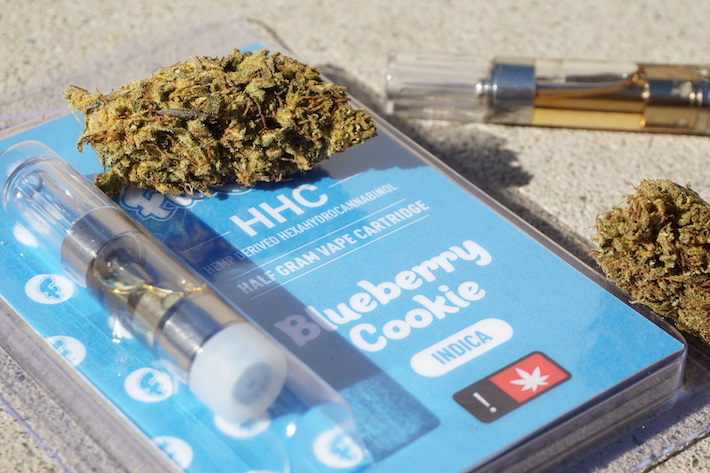
Here’s a quick run-down of the main alternative cannabinoids:
- THC-O: This is a shortened version of THC-O-acetate, and is a synthetic compound made by adding acetic anhydride to delta-8 THC molecules. It was actually known about from 1949, but has only really started to attract attention very recently. As well as being three times as strong as THC, it works a little differently because it takes about 20 to 30 minutes to start producing effects, which creates some concerns when it comes to taking too big a dosage. It’s hard to say whether it’s legal, but it’s generally argued that it is due to the 2018 Farm Bill.
- THCP: THCP (delta-9 tetrahydrocannabiphorol) was discovered in 2019 (in a natural cannabis plant) and is basically identical to THC, except it has seven carbon atoms in its alkyl side chain, rather than the usual five for THC. This means it’s much more effective at binding to the cannabinoid receptors (CB1 receptors, specifically) than traditional THC, in fact 30 times more effective. This means it shares its effects with delta-9, except it has much more intense effects.
- HHC: HHC (hydroxyhexahydrocannabinol) is essentially a hydrogenated form of THC that remains stable for longer, even after exposure to heat and UV. The usual double-bond in THC is completely missing, and the spare spots are filled with hydrogen atoms. It is found naturally in cannabis plants, but only in small amounts, so it has to be made in a lab if you want a substantial amount. It’s slightly less strong than delta-9, but stronger than delta-8, and is in a similar legal limbo state to other alternative cannabinoids.
- Delta-10: Delta-10 THC is essentially like delta-8, except with the double-bond in the tenth position rather than the eighth (delta-8) or ninth (delta-9, i.e. “standard” THC). Its effects are very similar to delta-8, except it’s described as more of a sativa-like high. It’s found naturally in cannabis plants, but in such low quantities that a synthetic process is needed to produce a substantial amount. It’s roughly half as potent as delta-9, with more stimulating and euphoric properties.
This all opens up many possibilities for people interested in cannabinoids, but there are concerns that are worth noting. Most importantly, these molecules are all under-researched in comparison to delta-9, and while that doesn’t necessarily mean there is a risk, it does mean it’s hard to rule one out. Similarly, discussions of effects and potencies should also be taken with a pinch of salt – it’s all very initial information at present and far from a sure thing.
The speed at which these alternative forms are finding their way onto the market is a concern, much like the discussion surrounding “legal highs” and “research chemicals,” small changes to a molecule can have big impacts on its effects and risks. The best advice is to tread lightly.
How is Delta-8 Extracted? Is it Synthetic?
Ben Cusack from Precision Extraction Solutions explained to CBD Oracle that “Processors can extract and effectively concentrate Delta-8 from the raw plant material, but CBD can also be converted into pure Delta-8, fortunately for hemp producers. It is [due to] the latter conversion of CBD to Delta-8 that people commonly refer to Delta-8 as a ‘synthetic.’”
In short, delta-8 THC can be extracted directly from the hemp plant in basically the same way as CBD. You use some method of extraction (such as ethanol), remove the fats and oils (winterization), decarboxylate it and finally distill it. The only problem with this is that there is very little delta-8 THC in the hemp plant naturally, so producing a substantial amount in a purely “natural” way would be inefficient and expensive. This is why most of the time the process is done in a semi-synthetic way, basically converting CBD into delta-8 through a series of chemical reactions.
The process for these reactions is a little more complicated, but essentially involves using a series of solvents alongside CBD isolate (i.e. pure CBD) to convert it to delta-8 and then removing any leftover solvents. Usually the solvent is an alkane such as heptane, and then an acid is added to the mix, with the mixture being heated to 100 degrees Celsius and stirring for up to 18 hours (depending on the specific mix of solvent and acid used). After this, the solution is washed and the resulting extract is sent off for testing. There are usually a range of byproducts, particularly other cannabinoids, so testing is crucial before adding it to a product as delta-8.
While this whole process doesn’t make it a synthetic chemical in the way people may think – because it does exist in the plant naturally – as explained above, it does lead most people to see delta-8 as in some way synthetic. There are some companies, such as Hometown Hero, who use a natural process for their delta-8 THC, but these are the exception rather than the rule.
How Psychoactive is it?
Delta-8 THC is less psychoactive than THC, but there is relatively little precise information out there at present. However, based on the dosages for edibles containing it, it can be assumed to be less than half as potent as THC. This isn’t the most reliable way to judge it, but it’s a good way to get a baseline idea of how intense the high from delta-8 is compared to delta-9.
We also conducted a survey of over 100 delta-8 users and asked about their experiences with delta-8. When the participants were asked whether delta-8 gets them high, of those who’d tried delta-8, 31.8% described it as a subtle high, 37.9% called it a mild high, and around 15.2% said it was a strong high. Another 15.2% said it didn’t produce a high at all. So overall the consensus was that it’s psychoactive, but doesn’t produce strong effects. Two thirds of respondents who’d tried delta-8 said that it produced a less intense high than delta-9, with almost all of the others calling it the same intensity of high.
Who is Using Delta-8 THC? And What For?
There are two major groups of people who are using delta-8: medical patients unable to get or not wanting delta-9 THC, and recreational users who are looking for a standard THC-like experience but with milder effects.
The first group primarily uses delta-8 because of state regulations around traditional THC that don’t exist for delta-8. The issue for them is a purely practical one, with current restrictions causing a problem that delta-8 solves in an imperfect but acceptable way.
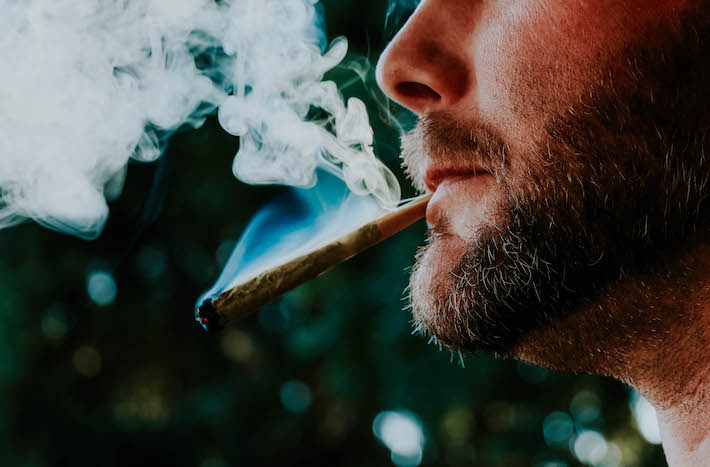
The second group doesn’t necessarily need delta-8, but it offers them an alternative product that does a lot of what they’re looking for without the sometimes overwhelming side effects of THC. There is also an issue of accessibility and affordability, with delta-8 THC being cheaper to buy and with the option of shipping across most of the country.
It should be stressed that this is a huge oversimplification of a much more complex reality: most consumers looking for delta-8 are probably a mixture of the two cases in terms of motivation. For example, it’s totally plausible (and actually recommended by some) that people using delta-8 medically are essentially looking for an effect but with a milder high, much like the second group did. Similarly, the second group could also be more interested in using delta-9 containing weed but unable to access it.
Conclusion
The results of the lab analysis for the 51 products sampled paint a pretty clear picture. Amid consumer curiosity but limited knowledge of delta-8 THC and what to expect, and operating in something of legal limbo, a large number of companies are opting to cash in with little concern for customers. Customers are unlikely to know exactly what to expect from delta-8, and there are no official requirements in terms of testing in most states, so surprising numbers of products undercut customers on delta-8 and compensate with delta-9. This may not be intentional, but the effect is essentially that customers are getting a more intense experience than they likely intended. Manufacturers are either outright lying about the contents of their products, or are producing them in such an unreliable way that they cannot guarantee their contents.
With legalization a reality in many states and likely coming at the federal level very soon, this may not seem like a huge deal. But people who choose delta-8 do so partially out of expectation of a milder experience, possibly because they get anxiety and paranoia from delta-9, and so substituting one for the other is undoubtedly immoral as well as being likely illegal. Consumer trust in the industry risks being eroded by a group of companies cashing in on “the next big thing” while barriers to entry are low.
Couple this with the essential absence of age verification for purchases and the often copyright-infringing packaging that frequently resembles candy, chips or other child-appealing items, and you have a recipe for disaster. How long is it before a kid buys a delta-8 product online, clicking through that they are indeed 21 (with no other barriers to making the purchase), and obtains something loaded with delta-9 and has a very bad experience? It has likely already happened many, many times.
This is why the legal cannabis industry and reputable manufacturers are calling for regulation of delta-8 products, and why legal states appear just as likely to take steps towards solving the issue as others. Customers should join the call for oversight on the industry, and after the results of our and other investigations, we are joining that call wholeheartedly.
We hope this report will become a mechanism to push for better quality and transparency in the delta-8 industry. Losing consumer trust at such an early stage could make it more difficult for the products to stay on the market long-term and could impair the whole movement toward alternative cannabinoids. We hope that this work will bring attention to this growing problem, shining the light on the lax standards that have been the norm up until now for alternative THC products.
Cannabinoids are great. Delta-9, CBD and delta-8 should be available to customers who want them, and we happily count ourselves among them. But misleading customers in the way many delta-8 companies do is unacceptable, and we will not stand for it.
References
- Freeman, D., Dunn, G., Murray, R., Evans, N., Lister, R., Antley, A., Slater, M., Godlewska, B., Cornish, R., Williams, J., Di Simplicio, M., Igoumenou, A., Brenneisen, R., Tunbridge, E., Harrison, P., Harmer, C., Cowen, P. and Morrison, P. (2014) How Cannabis Causes Paranoia: Using the Intravenous Administration of ∆ 9 -Tetrahydrocannabinol (THC) to Identify Key Cognitive Mechanisms Leading to Paranoia. Schizophrenia Bulletin, 41(2), pp.391-399 https://doi.org/10.1093/schbul/sbu098
- Freeman, D. and Freeman, J. (2021) Cannabis really can trigger paranoia? The Guardian. Available at: https://www.theguardian.com/science/2014/jul/16/cannabis-paranoia-psychoactive-thc-mood
- Foundation of Cannabis Unified Standards – FOCUS (2021) Smoke and Mirrors: Delta-8 Is Not Legal. Available at: https://www.focusstandards.org/smoke-and-mirrors-delta-8-is-not-legal
- Kight, Rod (2020) Delta-8 THC: Legal or Not? Available at: https://cannabusiness.law/delta-8-thc-legal-or-not/
- Kight, Rod (2021) Is Delta-8 THC “Synthetic”? Does It Matter? Available at: https://cannabusiness.law/is-delta-8-thc-synthetic-does-it-matter/
- McKeil, J. (2021) How Delta-8 THC is Made in the Lab. CannabisTech.com. Available at: https://www.cannabistech.com/articles/how-delta-8-is-made-in-the-lab
- Murray, R., Quigley, H., Quattrone, D., Englund, A. and Di Forti, M. (2016) Traditional marijuana, high-potency cannabis and synthetic cannabinoids: increasing risk for psychosis, World Psychiatry, 15(3), pp.195-204. https://doi.org/10.1002/wps.20341
- Pandika, M. (2021) Delta-8-THC is everywhere. Can “weed lite” really get me high without the anxiety? Mic. Available at: https://www.mic.com/life/can-delta-8-thc-get-me-high-without-the-anxiety-75142832
- US Cannabis Council (2021) The Unregulated Distribution and Sale of Consumer Products Marketed as Delta-8 THC, Available at: https://irp.cdn-website.com/6531d7ca/files/uploaded/USCC%20Delta-8%20Kit.pdf
- NORML (2021) NORML’s Guide to Delta-8 THC and Other Novel Cannabinoids, Available at: https://norml.org/marijuana/fact-sheets/normls-guide-to-delta-8-and-other-novel-cannabinoids/
Related Media Coverage
- The Hemp Industries Association (2021) Position Statement of the Hemp Industries Association Regarding Delta-8 THC and Other Hemp-Derived Cannabinoids. [online] Available at: https://thehia.org/wp-content/uploads/2021/06/HIA-Position-Statement-on-Dellta-8-and-Hemp-Cannabinoids.pdf
- Cornwell, A. (2021) Where is Delta-8 THC Available or Banned? (Map of States). [online] CBD Oracle. Available at: https://cbdoracle.com/news/policy/delta-8-thc-legal/
- Erickson, B. (2021) Delta-8-THC craze concerns chemists. [online] C&EN. Available at: https://cen.acs.org/biological-chemistry/natural-products/Delta-8-THC-craze-concerns/99/i31
- American Herbal Products Association (2021) Marketing of concentrated delta-8 tetrahydrocannabinol, artificial, or synthesized cannabinoids. [online] Available at: https://www.ahpa.org/Portals/0/PDFs/Policies/Guidance-Policies/2021_AHPAGuidance_policy_for_cannabinoids_Final.pdf
- U.S. Hemp Roundtable (2021) Statement on Marketing Hemp Products. [online] Available at: https://hempsupporter.com/news/for-immediate-release-statement-on-marketing-hemp-products
- Etter, K. (2021) I Stand Corrected: The Truth about Delta-8 THC. [online] Seed & STEM. Available at: https://theseedandstem.com/i-stand-corrected-the-truth-about-delta-8-thc
- Etter, K. (2021) California Lab Offers Cautionary Notes Regarding Delta-8 THC | The Marijuana Times. [online] Marijuanatimes.org. Available at: https://www.marijuanatimes.org/california-lab-offers-cautionary-notes-regarding-delta-8-thc
- Longman, M. (2021) I Took A Delta-8 Gummy Before Going On A Run. Things Got Weird — Really Weird. [online] Refinery29.com. Available at: https://www.refinery29.com/en-us/2021/08/10519251/what-is-delta-8-thc-gummies
- Oleinik, G. and Theisen, E. (2021) New Leafreport Research Reveals More Than 50% of Delta-8 THC Hemp-Derived Products Tested Had Illegal Levels of Delta-9 THC. [online] Leafreport.com. Available at: https://www.leafreport.com/education/delta-8-thc-products-market-report-11339
- Weinberg, B. (2021_ The Delta-8 THC Controversy | Project CBD. [online] Projectcbd.org. Available at: https://www.projectcbd.org/politics/delta-8-thc-controversy
- Leafly (2021) What is delta-8?. [online] Available at: https://www.leafly.com/news/science-tech/what-is-delta8-thc
- National Industrial Hemp Council (2021) NIHC Makes Policy Statement on Delta-8 THC. [online] PRNewswire. Available at: https://www.prnewswire.com/news-releases/nihc-makes-policy-statement-on-delta-8-thc-301389257.html
- National Hemp Association (2021) The Delta 8 Conundrum. [online] Available at: https://nationalhempassociation.org/the-delta-8-conundrum/
